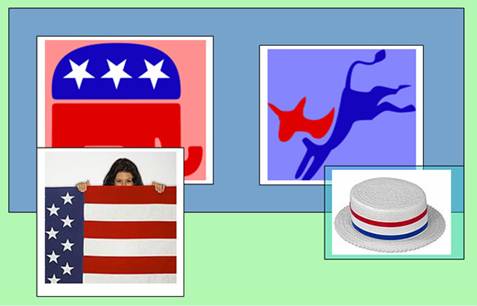|
Government : Political Participation : Introduction
Unit 7: Political Participation

In this unit we will examine many of the ways that people can get involved in the political process. We’ll take a look at the system for nominating candidates and electing people to office. This system generally works around our two-party system. This system is one in which a nation has two major political parties, and each runs a candidate in major elections. In the United States, the Democrats and Republicans are currently our two major parties. The two party system plays a big role in how our election system works, so we will begin by examining political parties.
 Learning Objectives: Learning Objectives:
- Understand the role political parties play in the American electoral system
- Evaluate the workings of a two party system and the role of minor parties in that system
- Compare and Contrast the Democratic and Republican parties
- Explain the steps a candidate must go through to gain his/her party’s nomination and become a presidential candidate
- Understand the importance of voting in a democracy
- Explain the workings of the Electoral College and determine how a candidate can win the popular vote and lose the election
- Analyze the impact of the media on presidential elections
- Evaluate the role interest groups play in American politics
 Below is a list of the key terms for this unit: Below is a list of the key terms for this unit:
Caucus
Closed Primary
Electoral College
Interest Group
Linkage Institution
Minor Party |
Multi Party System
Nomination
One Party System
Open Primary
Partisanship
Platform
|
Political Party
Political Socialization
Primary
Soft Money
Third Party
Two Party System
|
Go to next section |